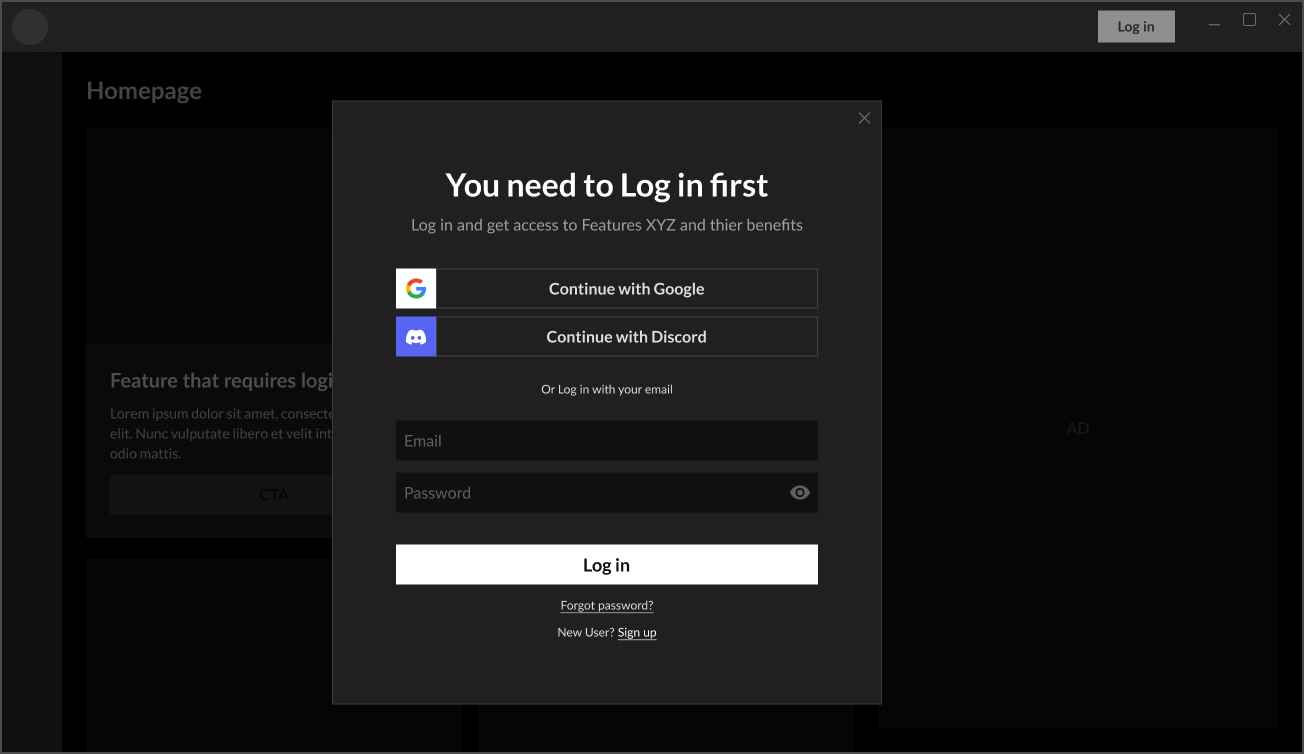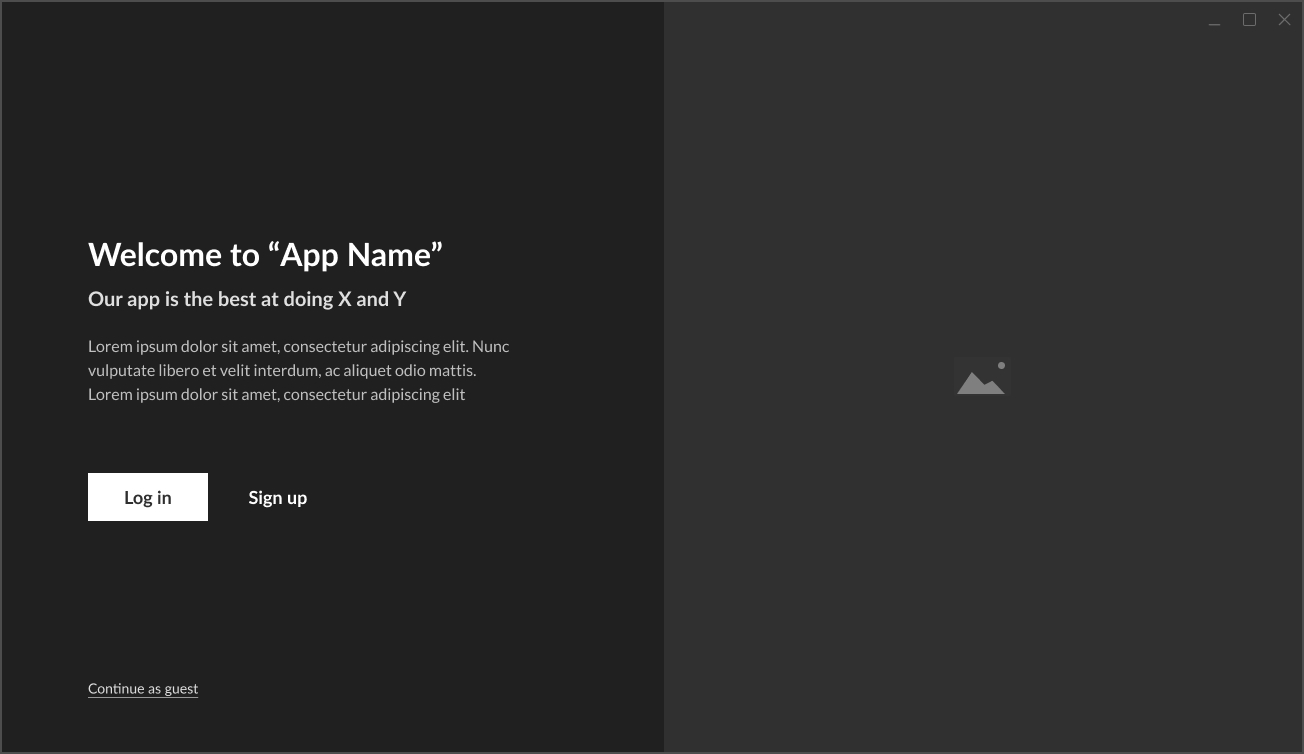User Login Experience
Login and sign up
Consider designing your app with a login feature. Adding a login to your app provides advantages such as:
- Personalized, customized content and features using login information.
- Pulling user specific data from external accounts (e.g., Steam, Twitch, etc.)
- Authentication, for features such as user profiles or cloud-based storage (e.g., highlights, stats).
- Monetization benefits such as better ad targeting, and increased revenue potential. For more information, see Hashed Emails.
Types of Login Methods
- Overwolf OIDC
- Seamless integration with Overwolf’s SSO service.
- Simplifies the login process for users already on Overwolf.
- Third-Party SSO (Steam, Twitch, etc.)
- Quick authentication using external accounts.
- Useful for apps that rely on game-related data (e.g., Steam inventory, in-game stats).
Example of an SSO login page:

- Custom Login System
- Full control over user accounts and data.
- Requires user management, security measures, and authentication handling.
- Not the best practice as most product will use google and other top products SSO service.
If you are going to offer an app login, consider:
- Offering a Guest Mode. Allows users to experience basic functionality of the app without committing to create a new account.
- Simplify the sign-Up Process by keeping sign-up on a single page with minimal required fields to reduce friction.
- Avoid unnecessary fields by eliminating redundant steps (e,g, password confirmation) to streamline the process.
- Use Google or other leading SSO options smoother user experience.
- Clearly differentiate between Login and Sign-Uppages. This ensures that users understand if they being logged into an existing account or creating a new one. Communicate clearly if their email is not associated with an existing account to avoid confusion.
Example of a custom login page:

For examples of login screens and flows, see Login and Signup best practices.